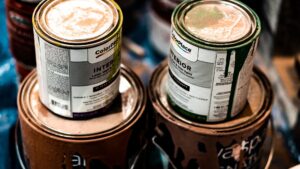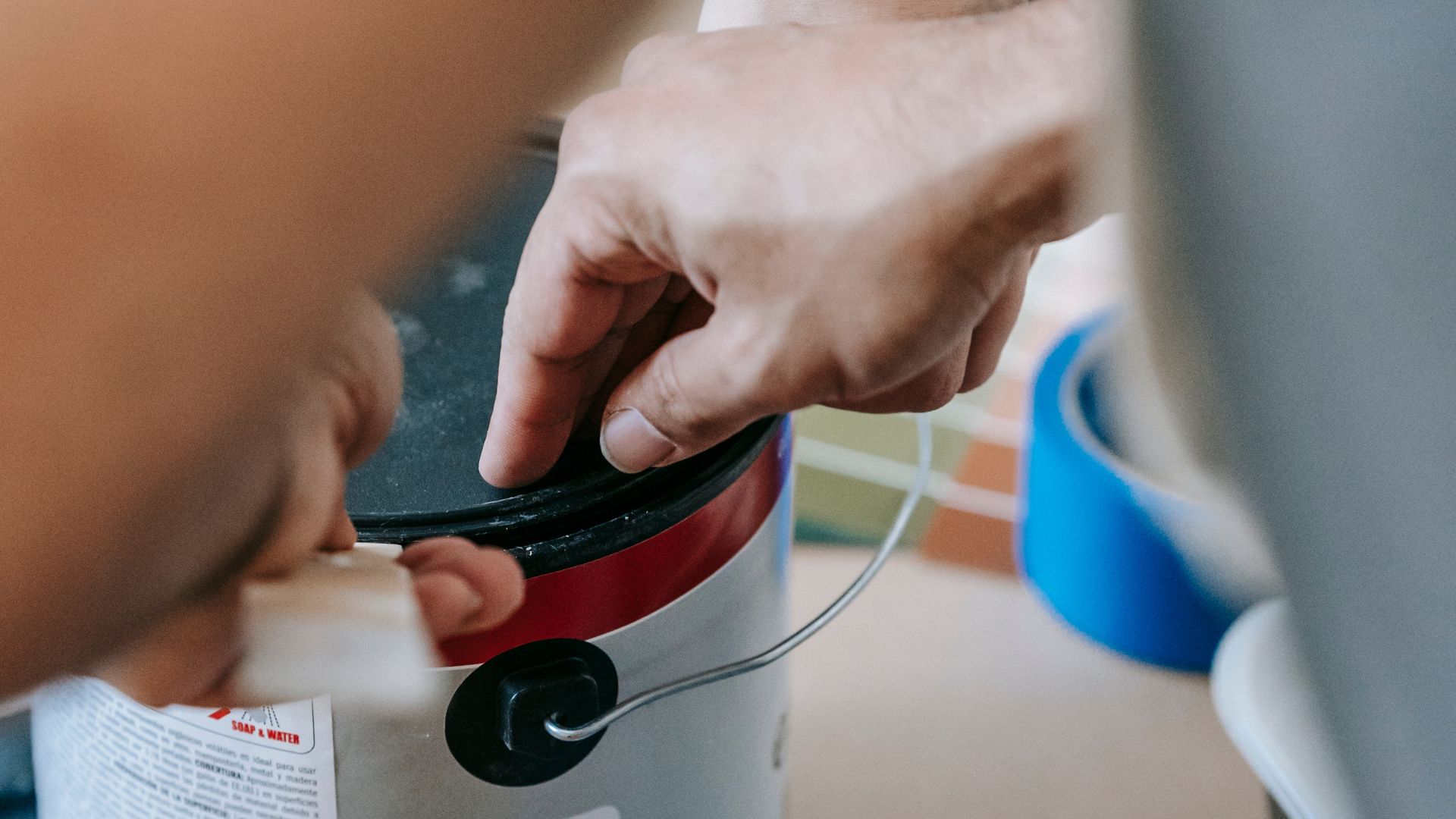Whether you’re an experienced muralist or diving into your first large-scale painting project, preparing a cinder block wall is crucial for a successful mural. And the right primer can make all the difference in achieving vibrant colors and ensuring the longevity of your artwork.
Understanding Cinder Block Surfaces
Cinder block walls have a porous and uneven surface that absorbs paint differently compared to smoother surfaces. They tend to soak up moisture, which can affect the paint’s adherence and durability. To combat this, priming becomes essential.
Choosing the Best Primer
1. Acrylic-Based Primers: These primers work wonders on cinder block surfaces. They’re specifically formulated to adhere well to porous materials like concrete and cinder block. Look for ones labeled “masonry primer” or “concrete primer.” They offer excellent adhesion, durability, and resistance to moisture.
2. Alkyd-Based Primers: These oil-based primers are another great option. They create a strong bond with the cinder block surface and provide an ideal base for paint. Alkyd primers are known for their durability and ability to seal porous surfaces effectively.
3. Water-Based Primers: If you prefer eco-friendly options, water-based primers are available as well. They offer good adhesion and are low in VOCs (volatile organic compounds), making them safer to use indoors.
Application Tips
- Surface Preparation: Before priming, clean the wall thoroughly to remove dirt, dust, and any loose particles. Repair any cracks or imperfections with filler and allow it to dry completely.
- Primer Application: Use a high-quality brush or roller designed for masonry surfaces. Apply the primer evenly, covering the entire wall. Follow the manufacturer’s instructions regarding drying times and additional coats, if necessary.
- Safety Measures: Work in a well-ventilated area and wear appropriate protective gear, including gloves and a mask, especially when working with oil-based primers.

External Resources for Further Guidance:
For more in-depth information on priming cinder block walls for murals, check out these resources:
- The Spruce: Best Primers for Painting Walls – Offers a comprehensive guide to various types of primers and their uses.
- Sherwin-Williams: Primers for Masonry Surfaces – Provides specific information on primers tailored for concrete and masonry.
- Behr Paint: How to Paint Exterior Cinder Block Walls – A step-by-step guide on painting exterior cinder block walls, including the importance of priming.
So,…
Selecting the right primer for your mural project sets the foundation for a stunning and long-lasting artwork. Remember, thorough preparation and choosing the appropriate primer are key to achieving the desired results. With the right materials and techniques, your cinder block wall will be ready for your artistic vision to come to life.
Enhancing Your Mural Painting Experience
Additional Considerations
- Primer Specifics: When choosing a primer, consider the specific characteristics you need. Some primers offer mold and mildew resistance, which can be beneficial for outdoor murals or areas prone to moisture.
- Surface Texture: If your cinder block wall has a particularly rough texture, you might want to consider a thicker primer or one designed explicitly for textured surfaces. This ensures better coverage and adhesion.
- Compatibility: Ensure the primer you choose is compatible with the type of paint you intend to use for your mural. Some primers work better with certain types of paint, so it’s essential to check for compatibility.
Application Techniques
- Primer Layering: Depending on the condition of the wall and the type of primer used, multiple coats might be necessary. Apply each coat evenly and allow sufficient drying time between coats as per the manufacturer’s instructions.
- Test Patch: Before priming the entire wall, consider doing a small test patch to evaluate how the primer adheres and how the paint will look on the surface.
Wrap-Up
The preparation stage, especially choosing the right primer, significantly impacts the outcome of your mural painting project. Taking the time to select the appropriate primer suited for cinder block surfaces can save you effort and ensure a more durable and visually appealing mural.
Remember, each project may have its unique requirements, so don’t hesitate to seek advice from paint specialists or professional mural artists for personalized recommendations.
Further Reading
- The Spruce: Best Primers for Painting Walls – Delve deeper into understanding various types of primers and their applications.
- Sherwin-Williams: Primers for Masonry Surfaces – Explore Sherwin-Williams’ insights on primers designed specifically for masonry surfaces.
- Behr Paint: How to Paint Exterior Cinder Block Walls – Detailed steps on painting exterior cinder block walls, including the significance of priming.
Parting Words
Preparing a cinder block wall for a mural might seem daunting, but with the right primer and techniques, you’re setting the stage for a visually captivating and enduring piece of art. Take your time, follow the steps diligently, and unleash your creativity onto that wall
Comparison tabular on this
| Primer Type | Advantages | Considerations | Recommended Brands |
|---|---|---|---|
| Acrylic-Based Primers | – Excellent adhesion to porous surfaces
– Resistance to moisture – Durable |
– Ensure compatibility with chosen paint
– Check for mold and mildew resistance if needed |
Zinsser, KILZ, Rust-Oleum |
| Alkyd-Based Primers | – Strong bond with cinder block
– Durable |
– Longer drying time
– May have higher VOC content |
Sherwin-Williams, Benjamin Moore, KILZ |
| Water-Based Primers | – Low VOCs
– Good adhesion |
– Might not be as durable as other options
– Check for suitability with paint type |
Behr, Glidden, Rust-Oleum |
Note: It’s important to consider the specific requirements of your project, the condition of the wall, and the desired characteristics of the primer before making a choice.
This table offers a quick comparison to help you weigh the pros and cons of each type of primer when preparing to paint a mural on a cinder block wall. For detailed information, refer to the earlier sections for a comprehensive guide on selecting the right primer for your mural project.
Wrapping up
Choosing the right primer for your mural on a cinder block wall sets the stage for a successful and visually captivating artwork. Each type of primer offers unique advantages, so consider the surface texture, environmental factors, and compatibility with your chosen paint before making a decision.
Remember, thorough surface preparation and the application of the appropriate primer are essential for achieving vibrant colors and ensuring the longevity of your mural. Don’t hesitate to seek advice from professionals or test a small patch before proceeding with the entire wall.
With the right primer and techniques, you’re not just painting a wall; you’re creating a lasting masterpiece. Embrace the journey, unleash your creativity, and let your mural shine.

For over a decade, I’ve been Mike, an artist, crafter, and designer deeply immersed in the Croc world. I thrive on crafting unique, size-inclusive patterns, fostering creativity, and sharing them on ktforum.com. My designs aim to ignite your creative spark and delight you, ensuring clarity and ease of use through rigorous testing. Join me in expressing your creative flair and showcasing your craft with joy.
Related Posts
- Painting a Mural on a Cinder Block Wall: Adding Artistry to Outdoor Spaces
Outdoor walls, especially those made of cinder blocks, offer a fantastic canvas for artistic expression.…
- The essential tools needed for painting a mural on a cinder block wall
Painting a mural on a cinder block wall can be an incredibly rewarding and transformative…
- Painting Cinder Block Walls: Do You Need Primer
Cinder block walls offer durability and strength, but when it comes to adding color or…
- Understanding Primer Coats for Cinder Block Wall Murals
Cinder block walls offer a sturdy canvas for murals but require careful preparation to ensure…

